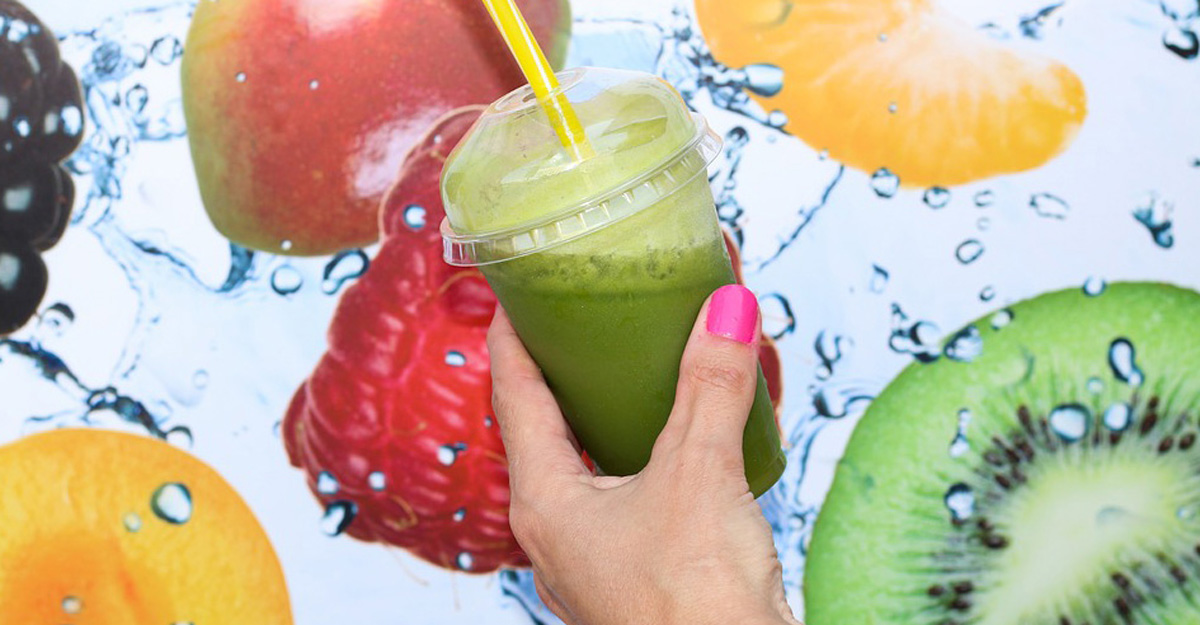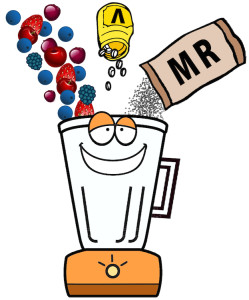
Meal replacements; The Good, The Bad, The Ugly
By Mark J Kaylor
How many times has this happened to you: your alarm goes off at 6 AM, you drag yourself from your bed, into the shower, and get yourself ready for the day ahead. By the time you are running out the door you realize you didn’t have any breakfast. Your options: skip breakfast – but this is not an option because you’ve read over and over how important breakfast is, you hit the drive-through at the closest fast food joint – another poor option because you know how bad fast food is, or you reach for a meal replacement – something more and more of us are choosing to do. But lingering in the back of your mind is this meal replacement truly a healthy alternative?
So what exactly is “the good, the bad, the ugly” when it comes to meal replacements? Let’s start with the latter, ugly, and work our way back. An “ugly” MR is typified by the products you often find in conventional markets and drugstores.
These are products often made up of less than healthy ingredients, including hydrogenated oils, synthetic chemicals, multiple sweeteners under various names, and artificial flavors and colors to name but a few. Examples of what I would consider the “bad” are smoothie options that can be found in many health food stores and smoothie shops. These fruit juice laden drinks often contain more sugar than a soda or candy bar. For instance one store bought fruit smoothie drink contains 58 g of sugar, which is well over 10 teaspoons. To give you a point of reference the World Health Organization only recommends up to 50 g for your total daily intake of sugar.
Make it a Meal, Not a Meal Substitute
So to get back to our earlier question, can meal replacements be good for us: well the answer to this is “Yes” and “No.” Just as it is with our meals, it all depends upon what goes into that meal replacement (MR). And just as it is with our food choices for meals, it has to begin with good, nutrient dense whole foods. Smoothies are effective ways to sneak healthier foods into the diet of those of us who aren’t big fresh fruit and vegetable eaters. Unfortunately for my own health I happen to be a lifelong veggie hater. Thankfully though blenderizing a variety of vegetables that I normally would not eat into a delicious smoothie has allowed for me to consume 5 to 10 servings of vegetables and fruits a day. Something that previous to this I would have never come close to. Smoothies also work very well with children. One study showed that 4% of kids ate fruit when it was offered at school breakfast but that percentage jump to 45% when smoothies were offered.
If prepared properly MRs can help round out and complete our nutritional needs since estimates have put 90% of us deficient in at least one nutrient. It is essential for a complete and balanced MR to contain not just protein and nutrients but some carbohydrates and good fats as well. Another reason it is important to include whole foods with their fiber and protein to our MR is that liquid meals do not tend to be as satisfying. In fact one study found that 12% more calories were consumed when people drank their food. This can be done with the choices you make to add to your smoothie. One of the best, complete, and easy to use MR additives is Chia seeds. Chia is roughly 1/3 protein, one-third healthy fats, and one-third needed fiber. (While often overlooked when it comes to nutritional deficiencies the lack of fiber is widespread and woefully low) Chia makes a wonderful addition to our drink because it is easy to use – all you need to do is add a heaping spoonful, and requires no additional processing or effort. Chia will thicken your shake up nicely; just be sure to not let it sit for too long because the Chia will continue to thicken.
Two other healthy, nutrient dense seeds that make wonderful additions to our meal replacement are hemp and flax. Both are whole-food excellent sources of omega-3 fatty acids. Hemp is also an excellent vegetable sourced protein and a good supplier of much needed magnesium. Flax seed research has demonstrated benefits for heart health, cancer protection, diabetes, and menopausal heat flashes. Both flax and hemp our best use freshly ground. Chia on the other hand can be used whole and does not need to be ground up.
Tips for a Healthy Meal Replacement 
• It all starts with the ingredients. Just like when preparing a meal, if you put junk, chemicals, etc. into your MR you will just end up with an unhealthy shake.
• Make it a meal, albeit in liquid form, by adding whole foods. Berries are a personal favorite, first because they taste so good, and second, because they are so beneficial. Berries support the brain and cardiovascular system, while combatting inflammation and free radical damage.
• Make vegetables the basis for the drink. Ideally you want to shoot for about 70% greens and 30% fruit. A good guide will be the color of you drink; it should be a beautiful green color.
• If you are adding probiotics to your MR, something I highly recommend, be sure to add them at the end of your mixing or blenderizing by just stirring them in after everything is blended and liquefied. Most of us know probiotics for their digestive and regularity benefits (as the commercial proudly proclaims), however a growing body of research suggests that the proper balance and makeup of these good bacteria is essential for overall health and virtually of every system in our body. Note: some of these may be hard to find in powder or liquid form but a good coffee mill or blender can easily break down tablets of any of these.
• Feel free to use whatever meal replacement powder you like but think of it as a supplement to your drink rather than the focus of it. Remember the MR should be built around a whole food base.
• Don’t be fooled into thinking that all already prepared MRs unnecessarily good for you. Just as you would when buying prepared or packaged foods be sure to read the labels. It may surprise you what you find. It should not look like a list for chemistry lab nor should it be overly high in sugars.
• Don’t overlook what is probably humankind’s first meal replacement – soup. It is nutritious, easy to make, keeps for a while, hardy, yummy and completely fits the bill for a healthy and nourishing meal replacement.
• Instead of using water to mix up your meal replacement drink try making a batch of tea of your favorite herbs or tonics (see below). I strongly recommend against using any significant amount of bottled juices. While they may help with the flavor they bring high levels of sugar with them.
• Adding the protein of your choice to your MR will make it more satiating so you are less likely to be hungry and our or two after drinking. Thankfully today there is a wide array of delicious and easy to mix protein powders, from whey to any number of vegetable proteins.
• If using a blender to make your meal replacement take care to not over blenderize. What we are trying to do is liquefy the foods but not to tear them apart thereby possibly damaging the nutrients. Some nutritionists have argued that overdoing the blender may break down the soluble fiber causing it to lose its benefits.
• For my last tip, do not turn your liquid meal replacement into a “fast” food. What I mean by this is don’t use this as an opportunity to quickly and mindlessly gulp down your meal. Mindless consumption of any food, be it a meal or MR, lends itself to overconsumption and a lack of satisfaction. So however you choose to consume your nourishment, sit down, enjoy it, and do it mindfully.
Tailoring your meal replacement
There are many ways to tailor your MR to your specific needs. One of the best ways you can do this is by turbo charging your MR with herbal tonics. Some of my general favorites are: Reishi mushroom extract-the tonic for the 21st century that supports the health of the whole body, Cordyceps-a long term energy tonic that may help keep you young and full of vitality, Chaga extract-to build constitutional strength and fight inflammation, Hawthorn-a powerful heart and cardiovascular system strengthener, Maitake D-Fraction-for clinically proven effective immune support, Propolis extract-for its diverse arrays of anti-microbial properties, the Ayurvedic herb Ashwagandha to help the body deal with excessive stress, and the old standby, Ginseng-to enhance and build life force.
There are any number of additions to our smoothie that we can choose to tailor to our own requirements. If you are very physically active or out in the sun a lot try using coconut water as the base to provide electrolyte support. Looking for a quick pick me up, try Matcha green tea, it almost instantly raises your energy as well as providing all the health benefits of green tea. Another energy booster that is said to provide a more gradual longer energy kick you can try Guayusa, a traditional herbal tea from the rainforests in South America. For digestive support try using chamomile tea or blending up some ginger and/or pineapple.
Meal Replacements; It’s About Food and More
Clearly meal replacements have filled a needed place in our hurry up and go-go-go lifestyle that is so prevalent today with growth almost doubling in the past year. While eating on the run is never really a good thing for our health the truth of the matter is that in today’s fast-paced world it is sometimes inevitable. We just need to make sure to make healthy choices at these times and whole food meal replacements can certainly fill this bill. This is doubly important when hurried and harried because the higher cortisol and other stress hormone levels will just be exacerbated by poor sugary junk food selections.
Food is not solely about fuel and nutrition. Food preparation and the act of eating are interwoven to the very fabric of our culture. We socialize with food. We celebrate with food. We even mourn with food. As an occasional option there is no reason not to use a meal replacement, there can even be benefits, as long as you follow the above guidelines. There is no doubt that a good meal replacement is a far better option and running through the local fast food drive-through.

